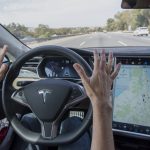 The ability of machines to accurately see objects in their environment is going to be crucial for technologies such as driverless cars to reach the mainstream. It’s a topic I’ve touched on a few times before, with projects such as the Visual Genome evolving to provide a hub for understanding how machines are able (or not) to understand the world they operate in.
The ability of machines to accurately see objects in their environment is going to be crucial for technologies such as driverless cars to reach the mainstream. It’s a topic I’ve touched on a few times before, with projects such as the Visual Genome evolving to provide a hub for understanding how machines are able (or not) to understand the world they operate in.
The platform was developed by professors at the Stanford Artificial Intelligence Lab and aims to tackle some of the toughest questions in computer vision, with the eventual goal of developing machines that can understand what it sees.
The Stanford team aren’t the only researchers working on this problem however, with a recently published paper from a team of Belgian researchers taking their own approach at the issue.
Seeing the unfamiliar
The researchers were particularly keen to explore how machines can better see and react to objects that they’re unfamiliar with. This is crucially important in driverless cars as the existing vehicles struggle in poor visibility. For instance, if a blurred shape appears on the road during a rain-storm, what would you want your car to do?
It’s a scenario that humans are generally pretty good at appreciating and reacting accordingly, but it’s fiendishly difficult for machines to replicate.
“Current state-of-the-art image-recognition technologies are taught to recognize a fixed set of objects,” the researchers say. “They recognize images using deep neural networks: complex algorithms that perform computations somewhat similarly to the neurons in the human brain.”
“We found that deep neural networks are not only good at making objective decisions (‘this is a car’), but also develop human-level sensitivities to object shape (‘this looks like …’). In other words, machines can learn to tell us what a new shape – say, a letter from a novel alphabet or a blurred object on the road – reminds them of. This means we’re on the right track in developing machines with a visual system and vocabulary as flexible and versatile as ours,” they continue.
Suffice to say, this should not be taken to mean that we’re ready to let driverless cars dominate the roads just yet, but it is nonetheless an important breakthrough in our ability to make such machines safe for all road users.